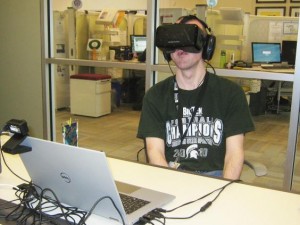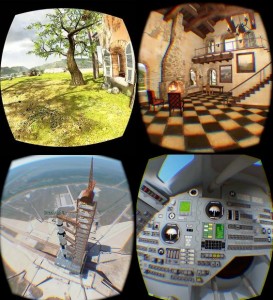Autistic individuals actually experience sensory overload, due to inherent challenges in blocking out external stimuli – the complete opposite of self-absorption. The challenges autistic individuals face in filtering externals can lead to anything from mild anxiety to full blown panic attacks. “Auties” may not adhere to societal norms but their experiences may chime with greater sections of society than ever before. Surely it’s now time to find more practical solutions and methods of bridging gaps in understanding and perception.
Virtual Reality and Augmented Reality can provide concrete support to autistic people. Recent scientific studies (1) have shown improvements in social skills of teenagers with autism after the use of advanced technologies. However, the limited number of people who benefited of this technology does not yet allow to verify their scientific validity.
For the past six years Dr Nigel Newbutt, associate head of the department of design communication at UWE Bristol, researched a range of virtual reality technologies for their potential in assisting autistic groups to break down perceptual and societal barriers. Recently this has involved the cutting edge technology that is Oculus Rift, an affordable Virtual Reality headset that provides tracking, 3D audio, and incredibly high visual resolution. Newbutt explains:
“If used appropriately, virtual reality can provide portals into a neurotypical world, and suggest ways to help navigate this world.”
Dr Barbara Strickland agreed – back in 1996 she carried out one of the first studies to use Virtual Reality as an autistic aid. Unfortunately, that technology at the time was equal parts uncomfortable and unaffordable. But recently virtual reality has resurfaced, in the fresh guise of Oculus Rifts’ sleek and affordable head–mounted display. Using the new technology, Dr Newbutt undertook a 2016 study at Michigan State in which he observed its use by an autistic spectrum group, focusing on physical experience and relevance to real world situations.
A properly immersive virtual scenario can be an attractive learning environment because it takes the pressure off from living the “real reality”, that autistic children tend to reject because it is the reason of their suffering. Of course the most obvious safety net of any virtual environment is that mistakes made there have no real ramifications. The potential for related Virtual Reality applications – if used sensitively and intelligently – is vast: in classrooms, it could provide a flexible and affordable support scheme to autistic spectrum children at key stages in their development.
In a 2014 “Blue Room” study in Newcastle (2), wall projections provided virtual cognitive behavioural therapy in pre-imagined scenarios for autistic children with specific phobias. Long-term follow-ups showed lasting improvements, with four children overcoming their phobias completely. Other Virtual Reality settings will express and teach social “norms” – especially those involving spatial awareness, a recurring issue for autistic individuals. This could help increase physical and social safety across a wide range of scenarios: crossing roads, coping with traffic, sitting in buses, which urinal to use in the gents in order to avoid dangerous misunderstandings. As Dr Newbutt says of his Virtual Reality training scenarios:
“Their real potential is for those on the autistic spectrum to gain enough understanding of the neurotypical world to be able to choose what to take on in their pursuit of self-sufficiency and happiness. We are gradually shifting perspectives from deficits to strengths.”
Virtual and Augmented Reality represent the new challenge to support people with autism in therapeutic interventions. Simulation of everyday life contexts seems to be effective in improving the social inclusion of these people.
The Italian MIUR (Ministry of Education, University and Research) believes in these technologies and in 2017 launched a challenge (3), opening a public tender for the realization of a Project and development of innovative applications of Virtual and Augmented Reality for people with autistic spectrum disorders worth 3,876,731.92 euros. MIUR itself explains this well in the technical specifications of the announcement:
“Virtual reality represents real life experiences in a safe and controllable way, making it possible to repeat the intervention several times. Such versatility in creating virtual environments and the elimination of common stress factors in face-to-face interactions suggests that VR can be more effective in improving the interaction capacity and social skills of other methodologies.”
We offer our readers an interesting video example, made with 360° technique, about the virtual experience in support of autism:
Sources:
(1) Independent.uk
(2) NCL
(3) StartUpItalia


